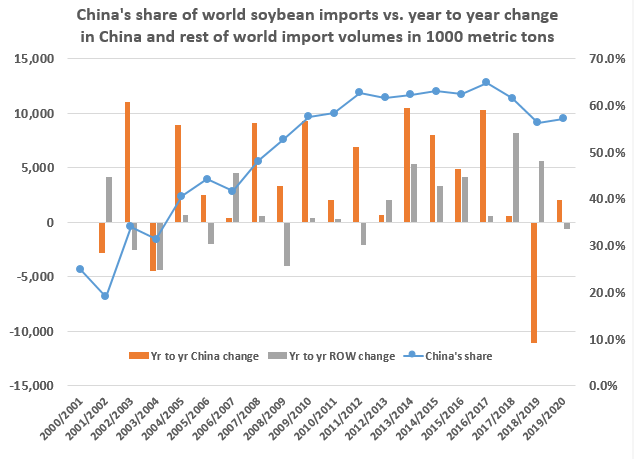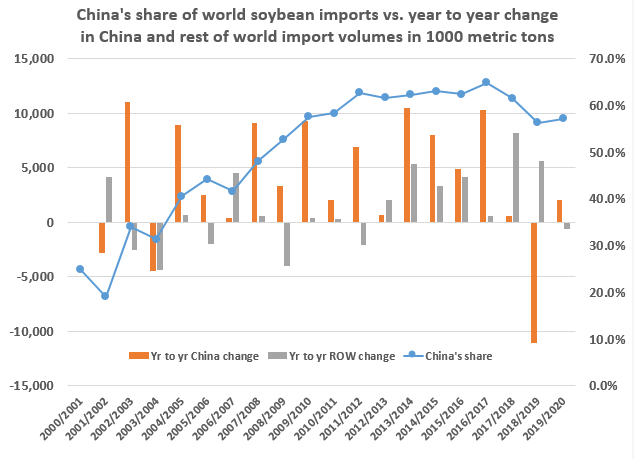Fundamentally Speaking
China Soybean Import Growth Analysis 2001-2018
Earlier this month USDA Secretary Perdue told a group of farmers that eventually the U.S. would again sell a large amount of agricultural products to China but did note that the soybean industry had probably became “too dependent” on China and needed to develop other markets such as India, Indonesia, Malaysia and Thailand.
That sounds good on the surface, but the reality of the situation is very few countries or even groups of nations have the clout of China. China remains by far the largest buyer of soybeans on the planet.
This chart shows China’s share of the world soybean import market over the past 20 years on the right-hand axis. The left-hand axis shows the year to year change in import volumes for China and then for the rest of the world (ROW) in 1000 metric tons.
P[L1] D[0x0] M[300x250] OOP[F] ADUNIT[] T[]
From the 2001/02 to 2017/18 marketing year, Chinese soybean imports increased by 83.71 million tons, over an 800% increase in that timespan and accounting for 19.1% of total global soybean imports shift to over 63.0%. During that time total imports for the rest of the world increased by 14.93 million metric tons, just 18% of the increase in Chinese imports.
As for the four countries the Agricultural Secretary mentioned, India is a major oilseed producer themselves and not only does not import soybeans but is in discussions with China about selling them oilseeds.
Indonesia is the eight largest soybean importer, but their estimated purchases this year at 2.725 million tonnes is up less than 0.90 million since 2010 and while Thailand is the sixth largest global buyer of soybeans, their purchases this year at 3.150 million tonnes is also up less than 1.0 million since 2010.
As for Malaysia, they really are a bit player in the world soybean trade with consumption at 690,000 tonnes about unchanged over the past 20 years given its reliance on palm oil and their limited meat consumption resulting in scarce demand for protein meals.
Like it or not when it comes to soybeans China is literally the 800-pound gorilla or in this case dragon in the room.
(KM)






Comments
To comment, please Log In or Join our Community .